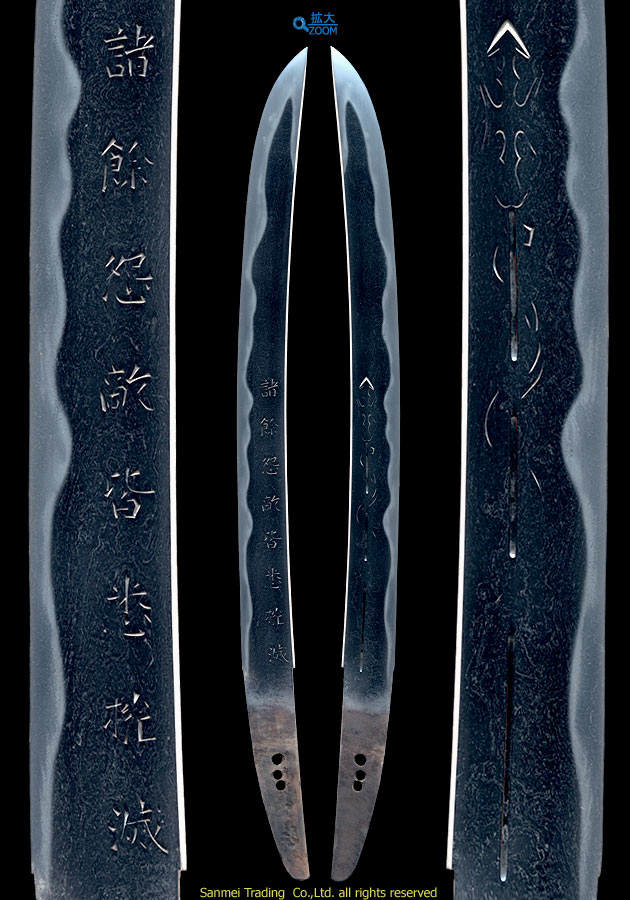attributed to Shitahara TERUSHIGE
Length of cutting edge37.9cm Curvature0.9cm Width of base31.9mm Thickness of base4.7mm
Forging (Hada) : Hada is conspicuous itame wooden marks, mixing in with Brul (Mokume) which is covered in thick Ji-nie glitter hard metal granules. Chikei (darkish Nie-lines) generates beauty of forgings impressively.
Temper line (Hamon) : Hamon is Nie-based, Wavy (Notare), Togari sharpened Gumome, box-shape, which varies in shape and height, temper line is active with Hotsure (fray) activity and Niju-ha (double layered temper) and Yubashiri (temper flows over the surface). Temper is entirely vivid and bright.
Temper of tip (Boshi) : Temper line of the tip irregularly sharpened up then deeply turns back.
Tang (Nakago) : Nakago is Tanago-shape.Three peg holes. Kuri-jiri round heel.
Hachiouji-city in Tokyo, used to be a domain by the general Takeda Shingen in the Warning states period, 16th century, Smith Chikashige or Chikahiro, who were pupils of Tunahiro in Odawara, Soushu province, had moved as frontiers to establish Shitahara school. They had mostly served for generals such as Takeda, Houjou and Uesugi. The entire blade is freshly polish recently and gives off the possible best beauty of forging scene to hold herioc original shape and also recall the deep faith for Buddhism by Samurais.
Copper habaki collar, set in an old restored shirasaya plain wooden mouonting.

